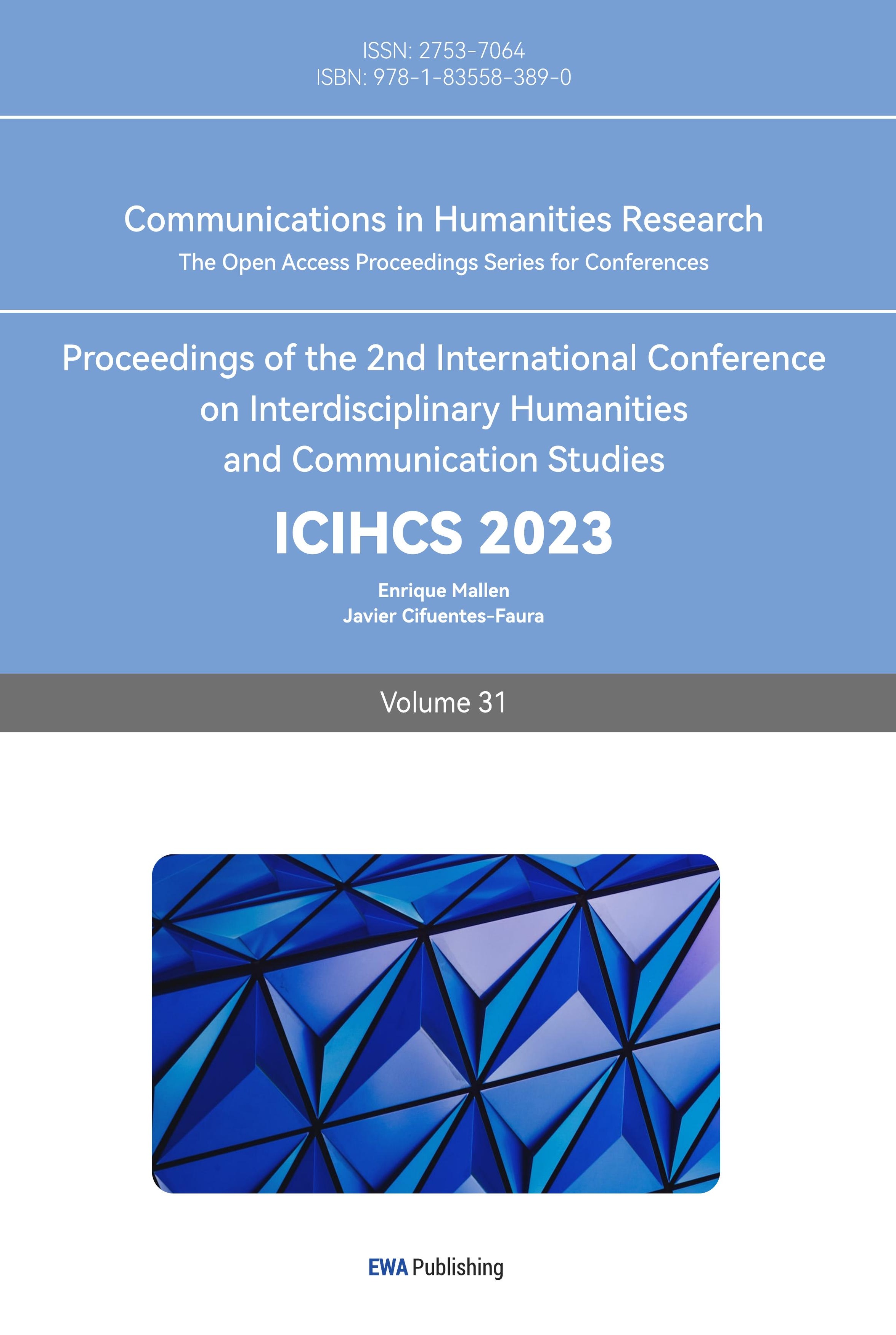1. Introduction
The definition of culture remained debatable while all cultural anthropology works based on this term. Some believe that it’s tangible. Others claim that culture is conceptual. However, the ambiguity of the definition didn’t decrease the value of cultural heritages. Cultural heritages showed significant economic and social values which led to the rapid development of cultural heritage tourism. This research aims to explore the potential defects in the cultural heritage tourism system by analyzing a specific case —— tourism attraction Tianzifang in Shanghai. The purpose of the research is to reconsider the harm that tourist attraction will bring to cultural heritage sites and to encourage rethinking the balance between the preservation of heritage and the profit that tourism can bring.
2. Literature Review
The tourism industry existed mainly for educational or recreational purposes in the early world. Moreover, historical evidence also proved that journeys originated from luxury lifestyles and searched for amusement [1].
Although traveling as an entertainment might only reserve for nobles back then, it’s recently opened to a wider population. The World Tourism Organization (WTO) suggested that in 2007 there was a total of 903 million tourists that spent 625 billion USD [2]. Besides, the tourism industry provided roughly 100 million employees globally. In short, the tourism industry already became one of the prominent drivers of economic growth. Tourism could classify into numerous types. It could include urban tourism, cultural tourism, religious tourism, seaside tourism, and more [3]. Among them, cultural heritage as “one of the most important and ubiquitous tourism resources in the world” made heritage tourism a notable form of tourism [4]. Defining heritage could be extremely complicated. People today generally agreed that heritage is what humankind inherits from the past and utilizes in the present [5,6]. The vague definition leaves room for misunderstanding. For instance, heritages are not always old [7] and tangible. Though architecture and other materialized heritage have a remarkable position in heritage tourism, intangible tourism is also worth receiving attention. Language, music, dance, religion, folklore, art forms, traditional knowledge, gastronomical traditions, social relations, rituals, hunting methods, and ceremonies, all those components together formed a complete heritage of a specific culture [8-10].
Such false assumption of heritage thus caused the focus of promotion and consumption to be clearly on tangible heritage in tourism destinations [11].“limited interest has been shown by academics in the relationship between tourism and intangible cultural heritage” [2].
Traditional tourism entrepreneurship and development today was burning the cultural heritage of a region in exchange for high profit. Traditional tourism entrepreneurship and development take a capitalist approach, resulting in lower benefits for host communities [12]. The flourishing tourism industry raised local housing prices, due to a serious upgrade of the city aiming to attract more tourists. Inhabitants, unable to afford growing housing prices, either passively or actively left their hometown. The host communities are the ones who inherited those intangible cultural heritages. Gentrification of local inhabitants leads to the slow vanishing of regional cultural identity [13].
However, intangible cultural heritage is still an indispensable part of heritage tourism. “According to some estimates, between 50 and 80 percent of all domestic and international travel involves some element of culture such as visiting museums and historic sites, enjoying music and arts, or being immersed in the living culture of a destination.” [14]
Past literature already realized the plight intangible culture heritages are currently facing. In the paper “Planning for intangible cultural heritage in Tourism: challenges and Implications” Esfehani made a detailed description of difficulties intangible cultural heritage faced. A well-constructed envision of binding intangible heritages into recent tourism was proposed in there as well. However, the paper’s discussion was more generalized to the entire heritage tourism industry. This paper will follow the conclusions Esfehani made to understand intangible cultural heritage’s situation in attractions in Shanghai.
3. Methodology
This paper will combine a survey with a case discussion of Tianzifang to argue the defects of Shanghai heritage tourism attractions.
3.1. Why Shanghai
Shanghai is the region studied in this paper due to its unique characteristics. Shanghai as a heritage tourism destination attracted millions of travelers each year. Those travelers are either attracted by the modernity of this grand city or by the city’s unique cultural heritage. During the 20th century, Shanghai was segregated into different districts that reigned directly under Western powers. This unique historical background fostered the assimilation between Western and Eastern cultures.
However, in the 21st century, Shanghai was also one of China's most prominent trading centers. "This was a result of a series of reforms in the city including industrial restructuring, housing reform, and infrastructure rebuilding. To keep up with the time, many parts of the infrastructure system need to be repaired, particularly in the old central city" [15].
In general, Shanghai is a prototype of a city that needs to balance its modern features and historical and cultural imprints.
3.2. Why Tianzifang
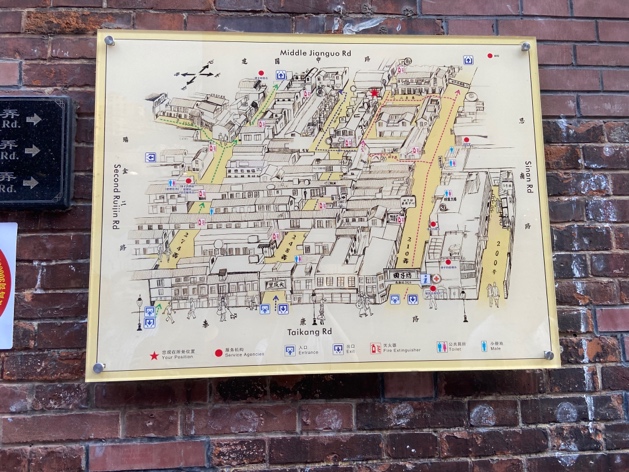
Figure 1: The map for the entire Tianzifang
Tianzifang is a series of commercialized old alleys in Shanghai known for its 20th-century Shikumen housing style. There are also several prominent factories of fragrance and cigarettes. Such architectural style was a combination of Western Chinese and English architectural styles. These alleys today are transformed into a shopping center with outstanding cultural characteristics. They claimed that those alleys are a perfect spot for travelers to experience the charm of life in 20th-century Shanghai.
Tianzifang is explicitly analyzed due to its fame and its typicality.
The analysis of Tianzifang will base on first-hand graphic records I took and personal observations.
3.3. Survey design
The survey was designed with careful consideration of stratification. It requires respondent to name at least one place or thing in Shanghai that they believe best represents the cultural heritage of this place. This survey aimed not to find a travel checklist full of locations that were “recommended by local inhabitants”, but to analyze the similarities between all answers and get some of the most prominent heritage elements that Shanghainese valued.
The time it takes to understand and blend into a culture varies between people. In this survey, only the answer of residents who lived in Shanghai for over 8 years will be analyzed. This is intended to gain a more representative sample of how Shanghainese understand their hometown.
The survey also collected basic information such as gender and income level. Both factors could greatly impact a person’s understanding of this city. For instance, income level could determine where a person lives and where they carry out their daily activities. Thus, asking these questions is supposed to prevent answers to the survey from misrepresenting extra populations.
Finally, within just a few decades, Shanghai has undergone drastic changes, both physical reconstruction of the city and a wide mental revolution. Hence the survey particularly asked where the place embody 19th/20th-century Shanghai heritage and where the site represent modern Shanghai heritage. This separation should break the misassumption of heritage attractions that must be old.
The entire survey will attach to this paper at appendix.
4. Look Close into Tianzifang
Tianzifang was a typical example of the creative recreation of historical accommodation blocks. By pure observation, there are three main problems I noticed in my journey in those alleys:
• The exploitation and further damage of historical buildings
• The disruption of local inhabitant’s life
• The lack of intangible heritage within the alleys
4.1. The exploitation of historical buildings
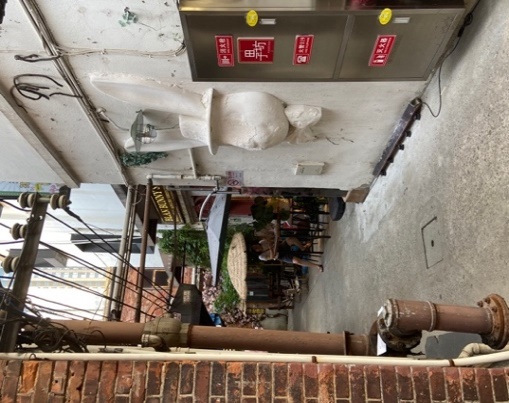
Figure 2: An alley in Tianzifang where the façade of the hisotrical building was altered
Tianzifang, as it claimed, is worth noticing due to its well-protected Shikumen architectural style. However, the façade of lots of buildings in the alley were already redecorated or changed into another style. Shops repaint the lower half of the building. European style storefront was common and attracted numerous young tourists to leave their photos in front of it. Such transformations might make individual shops more desirable to tourists but damaged the harmony of the style of the entire block.
As a site that displayed Shanghai architectural style to tourists, Tianzifang even acquiesces in reconstructing and destroying ancient buildings.
4.2. Disruption of local inhabitant’s life
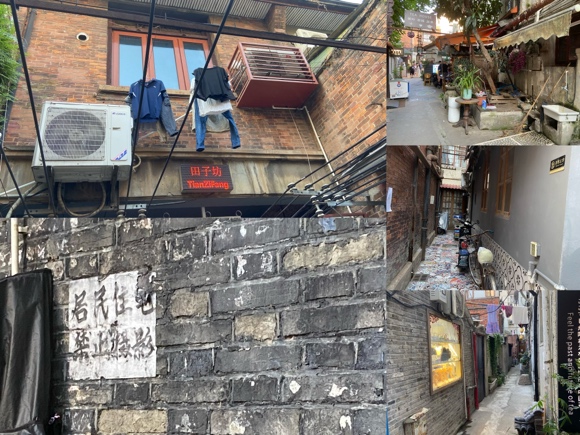
Figure 3: Signs of real residents living in Tianzifang
Even today Tianzifang was already intensely commercialized. There are still around a hundred families living in those alleys. Flooding tourists unquestionably brought inconvenience to residents. Since Shikumen was a Chinese version of an English lane house, the inner space of each building was minimal. At the same time, usually several (two to four) families will share a building. Also, the lighting condition in buildings is poor. Hence, in the past, inhabitants in those buildings spent a large portion of life outdoors. However, today thousands of tourists forced residents to stay within the buildings and occupied almost every square meter of those alleys. Several warning signs (the picture at the lower left corner) are also painted on the wall asking tourists not to take pictures of those private buildings where inhabitants still lived in. The privacy of local inhabitants is widely invaded. The noise from tourism activity in the block also greatly impacted people’s daily lives.
4.3. Lack of intangible heritage
Tangible heritage such as architecture still left traces in Tianzifang. Whereas intangible cultural heritage entirely disappeared in those alleys. Tianzifang introduced itself as a place where Western and Eastern cultures integrated. Culture did mix thoroughly in those alleys. Tourists could find representative cuisine from all around China, including Chengdu Chuanchuan(up-right of the pic) and Changsha stinky tofu.
Moreover, Western fast food such as cheese hotdogs, French fries (up-left of the pic), and beer also win high popularity in Tianzifang. There’s even a tiny alley with a strong Europe style. Numerous small pubs are selling “Spanish” beer (the lower one of the pic) to foreign travelers who visit to experience Shanghai heritage.
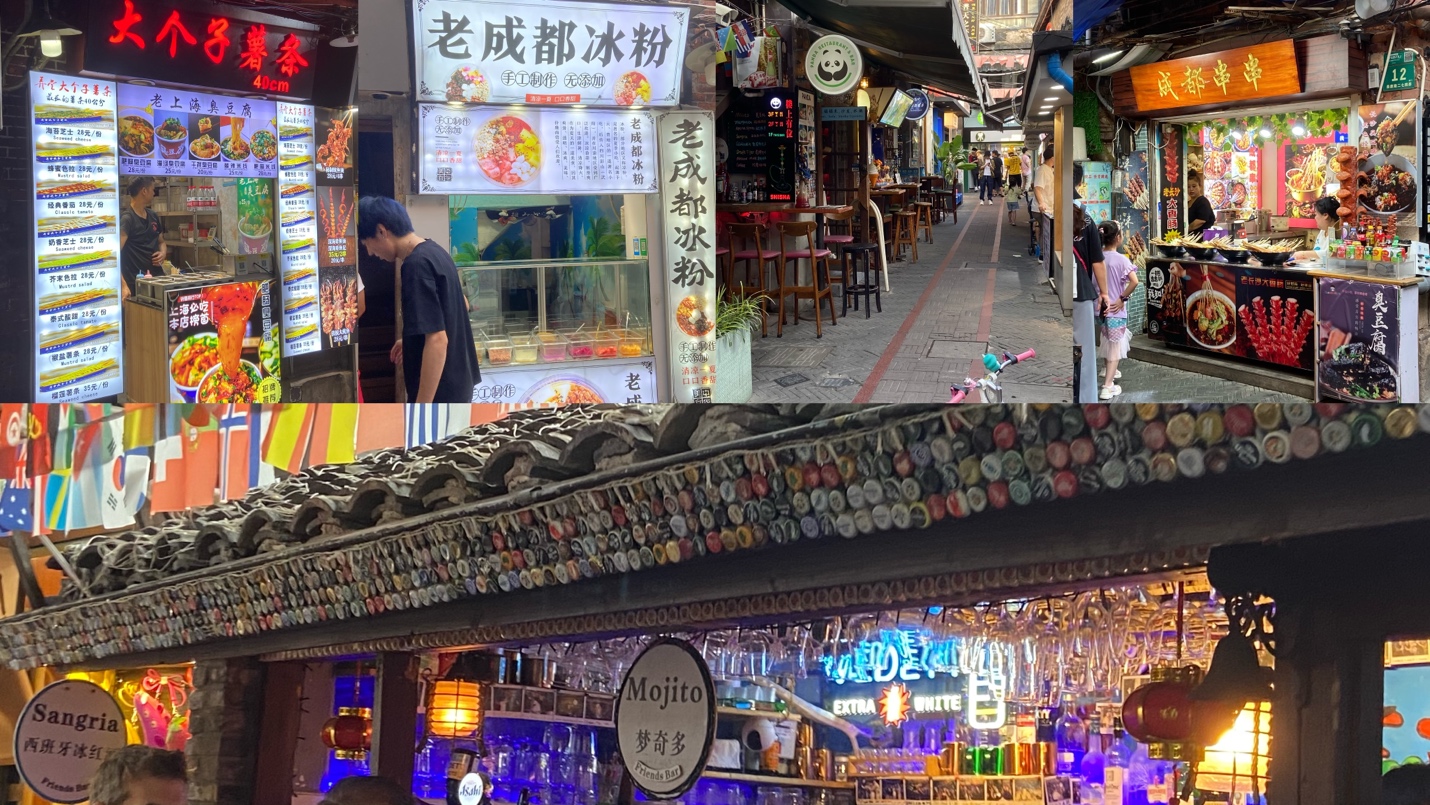 Figure 4: Shops with cultural characteristics of other regions
Figure 4: Shops with cultural characteristics of other regions
Based on those observations, the word culture invasion might be more appropriate instead of claiming Tianzifang as a center of cultural integration.
5. Survey answer analysis
In total seventeen responses were received. Only one of the responses is from someone who lived in Shanghai for three years or even less. The other sixteen responses are all from people who lived in Shanghai for over 10 years. The survey asked respondents how representative Tianzifang is to the Shanghai heritage. On a scale of 1 to 10, the average score of all 16 answers is 4.56. This score means that these sixteen respondents didn’t agree that Tianzifang adequately represented Shanghai's cultural heritage.
Analyzing all 16 answers, the multicultural heritage that Shanghai embodied was mentioned repeatedly. In response no.17, the respondent reckoned that only walking on the streets of Shanghai could allow a tourist to experience a harmonious blend of old and new culture in Shanghai. Respondent 16 directly gave out two streets that she believed well displayed the diverse cultural heritage mutually existing within the city.
In all 16 responses, this survey's most nominated heritage site was still the famous building complex at the Bund (Waitan). On one hand, this once again proves the importance of tangible cultural heritage in heritage tourism. On the other hand, intangible cultural heritages in Shanghai is once again forgotten even by the people who inherited them.
6. Conclusion
Shanghai has a rich cultural heritage, both tangible and intangible. Yet many intangible cultural heritages did not receive promotion and protection like some tangible heritage. Tianzifang is an example of how scenic spots mistreat local inhabitants, ignoring that inhabitants are the core of preserving and performing intangible heritages. On the other hand, the survey showed how residents failed to realize their importance to local cultural heritage.
Though the problems of Shanghai heritage tourism attractions are obvious, there’s still possible solutions. There’s lots of streets mentioned by respondents when they are asked which place in shanghai tourist could sense the most Shanghai heritages. City walk, which means people would travel a region by purely walking on public streets, recently received increase attention online. Maybe encouraging tourists to really walk into city, into blocks where people lived their live and spent their time is a good way to introduce intangible cultural heritage. Dialects people use on street and traditional restaurant standing in the corner could all help newcomers to peek into a normal routine of a day in Shanghai.
Also, perhaps Tianzifang as a scenic spot, didn’t completely failed to carry its purpose. When walking in those alleys, I met a tourist come from Milan, Italy. Out of curiosity, I asked him whether he could sense unique shanghai heritage from those alleys. That tourist told me that he’s completely new to the building structure and the narrow alley in Tianzifang. He said that he had a great experience in it. This short conversation made me wonder that whether it’s me who’s too skeptical toward Shanghai heritage site.
References
[1]. Gyr, U. (2010). The history of tourism: Structures on the path to modernity. Notes, 2(8), 1-18.
[2]. United Nations World Tourism Organization. (2012). Tourism and intangible cultural heritage. Madrid, Spain: Author.
[3]. Camilleri, M.A. (2018). The Tourism Industry: An Overview. In: Travel Marketing, Tourism Economics and the Airline Product. Tourism, Hospitality & Event Management. Springer, Cham. https://doi.org/10.1007/978-3-319-49849-2_1
[4]. Dallen J. Timothy (2014) Contemporary Cultural Heritage and Tourism: Development Issues and Emerging Trends, Public Archaeology, 13:1-3, 30-47
[5]. Graham, B., Ashworth, G. J., & Tunbridge, J. E. 2000. A Geography of Heritage: Power, Culture and Economy. London: Arnold.
[6]. Hall, C. M. & McArthur, S. 1998. Integrated Heritage Management: Principles and Practice. London: The Stationary Office.
[7]. Wall, G. 1989. An International Perspective on Historic Sites, Recreation, and Tourism. Recreation Research Review, 14(4): 10–14.
[8]. Smith, L. & Akagawa, N. 2009. Intangible Heritage. London: Routledge
[9]. Stefano, M. L., Davis, P., & Corsane, G. 2012. Safeguarding Intangible Cultural Heritage. Woodbridge, UK: Boydell.
[10]. Vaz da Silva, F. 2008. Archeology of Intangible Heritage. New York: Peter Lang
[11]. Esfehani, M. H., & Albrecht, J. N. (2016). Roles of intangible cultural heritage in tourism in natural protected areas. Journal of Heritage Tourism, 13, 15-29.
[12]. Dredge, D. (2017). Institutional and policy support for tourism social entrepreneurship. Social entrepreneurship and tourism: Philosophy and practice, 35-55.
[13]. Andrade, M.J., Costa, J.P. (2020). Touristification of European Port-Cities: Impacts on Local Populations and Cultural Heritage. In: Carpenter, A., Lozano, R. (eds) European Port Cities in Transition. Strategies for Sustainability. Springer, Cham. https://doi.org/10.1007/978-3-030-36464-9_11
[14]. Timothy, D. J. 2011. Cultural Heritage and Tourism: An Introduction. Bristol, UK: Channel View Publications.
[15]. Wu, W. (1999). City profile: shanghai. Cities, 16(3), 207-216
Cite this article
Liu,E.S. (2024). Incomplete Representation of Cultural Heritages in Scenic Spot: Shanghai Tianzifang ---- The Neglection of Intangible Cultural Heritages. Communications in Humanities Research,31,62-69.
Data availability
The datasets used and/or analyzed during the current study will be available from the authors upon reasonable request.
Disclaimer/Publisher's Note
The statements, opinions and data contained in all publications are solely those of the individual author(s) and contributor(s) and not of EWA Publishing and/or the editor(s). EWA Publishing and/or the editor(s) disclaim responsibility for any injury to people or property resulting from any ideas, methods, instructions or products referred to in the content.
About volume
Volume title: Proceedings of the 2nd International Conference on Interdisciplinary Humanities and Communication Studies
© 2024 by the author(s). Licensee EWA Publishing, Oxford, UK. This article is an open access article distributed under the terms and
conditions of the Creative Commons Attribution (CC BY) license. Authors who
publish this series agree to the following terms:
1. Authors retain copyright and grant the series right of first publication with the work simultaneously licensed under a Creative Commons
Attribution License that allows others to share the work with an acknowledgment of the work's authorship and initial publication in this
series.
2. Authors are able to enter into separate, additional contractual arrangements for the non-exclusive distribution of the series's published
version of the work (e.g., post it to an institutional repository or publish it in a book), with an acknowledgment of its initial
publication in this series.
3. Authors are permitted and encouraged to post their work online (e.g., in institutional repositories or on their website) prior to and
during the submission process, as it can lead to productive exchanges, as well as earlier and greater citation of published work (See
Open access policy for details).
References
[1]. Gyr, U. (2010). The history of tourism: Structures on the path to modernity. Notes, 2(8), 1-18.
[2]. United Nations World Tourism Organization. (2012). Tourism and intangible cultural heritage. Madrid, Spain: Author.
[3]. Camilleri, M.A. (2018). The Tourism Industry: An Overview. In: Travel Marketing, Tourism Economics and the Airline Product. Tourism, Hospitality & Event Management. Springer, Cham. https://doi.org/10.1007/978-3-319-49849-2_1
[4]. Dallen J. Timothy (2014) Contemporary Cultural Heritage and Tourism: Development Issues and Emerging Trends, Public Archaeology, 13:1-3, 30-47
[5]. Graham, B., Ashworth, G. J., & Tunbridge, J. E. 2000. A Geography of Heritage: Power, Culture and Economy. London: Arnold.
[6]. Hall, C. M. & McArthur, S. 1998. Integrated Heritage Management: Principles and Practice. London: The Stationary Office.
[7]. Wall, G. 1989. An International Perspective on Historic Sites, Recreation, and Tourism. Recreation Research Review, 14(4): 10–14.
[8]. Smith, L. & Akagawa, N. 2009. Intangible Heritage. London: Routledge
[9]. Stefano, M. L., Davis, P., & Corsane, G. 2012. Safeguarding Intangible Cultural Heritage. Woodbridge, UK: Boydell.
[10]. Vaz da Silva, F. 2008. Archeology of Intangible Heritage. New York: Peter Lang
[11]. Esfehani, M. H., & Albrecht, J. N. (2016). Roles of intangible cultural heritage in tourism in natural protected areas. Journal of Heritage Tourism, 13, 15-29.
[12]. Dredge, D. (2017). Institutional and policy support for tourism social entrepreneurship. Social entrepreneurship and tourism: Philosophy and practice, 35-55.
[13]. Andrade, M.J., Costa, J.P. (2020). Touristification of European Port-Cities: Impacts on Local Populations and Cultural Heritage. In: Carpenter, A., Lozano, R. (eds) European Port Cities in Transition. Strategies for Sustainability. Springer, Cham. https://doi.org/10.1007/978-3-030-36464-9_11
[14]. Timothy, D. J. 2011. Cultural Heritage and Tourism: An Introduction. Bristol, UK: Channel View Publications.
[15]. Wu, W. (1999). City profile: shanghai. Cities, 16(3), 207-216





